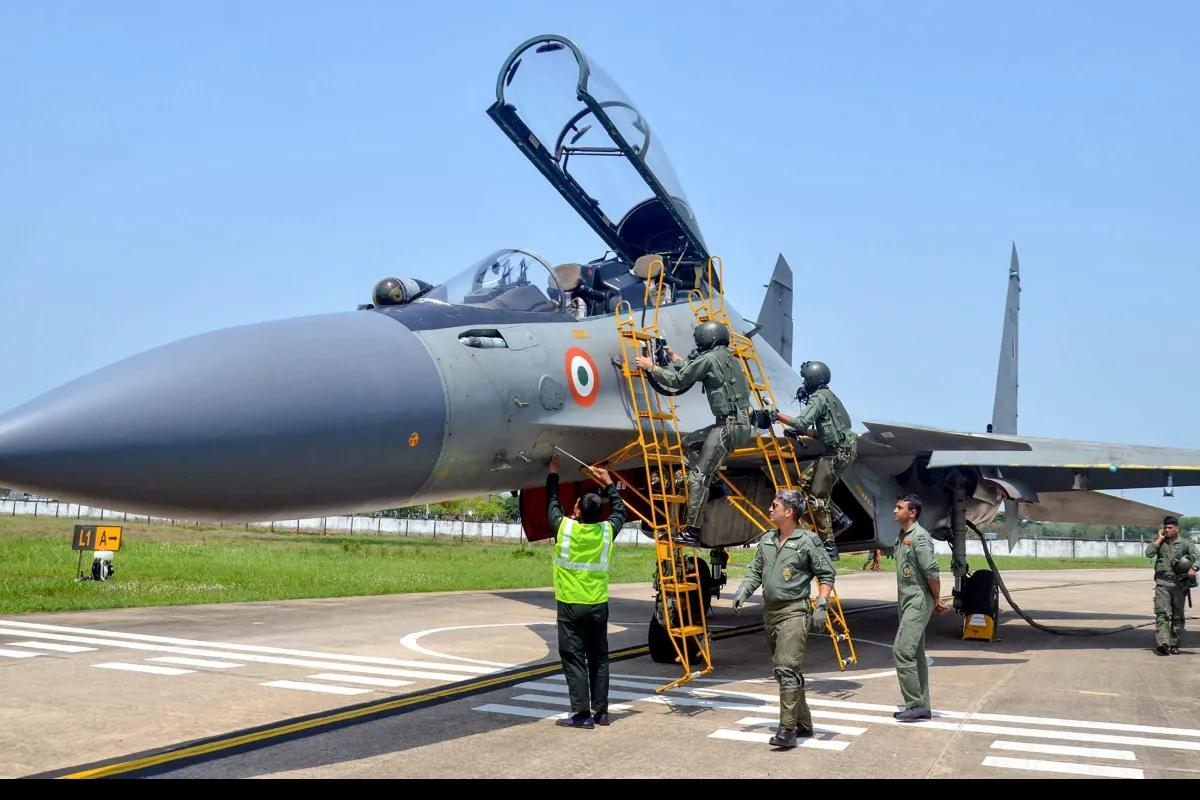This month, a contingent of the Indian Air Force including fighter aircraft and over 120 personnel is, for the first time, in the midst of a multi-nation exercise hosted by the United Arab Emirates (UAE) named Desert Flag (March 3-27). Other than India and the UAE, Bahrain, France, Saudi Arabia, South Korea and the United States are also participating, offering an interesting view for New Delhi of the various geo-political intricacies at play in and around the West Asia region.
Complexities, Asia’s links
West Asia is home to perhaps some of the most complex security conundrums of the modern times. The sixth edition of Desert Flag this year takes place as tensions between Iran and the U.S. peak. Also added into the mix is the signing of the Abraham Accords in September 2020 between Israel, the UAE and Bahrain, a more cordial and joint Arab-Israel dynamic predominantly designed to counter Tehran’s growing influence in the region, as seen through the wars in Syria and Yemen.
While joint exercises in West Asia between Arab states and their western counterparts is common, the 2021 edition’s involvement of contingents from India and South Korea showcases the growing interests of Asian economies. As net importers of crude oil, these Asian economies rely heavily on the West Asian states for their supplies, and, by association, have increased stakes in the safety and security of the region from the perspective of political and economic stability. And more importantly, in the protection of vital sea lanes in areas such as the Strait of Hormuz, the Gulf of Aden and the Red Sea stretching out into the Arabian Sea and the wider Indian Ocean.
A fading U.S. hold
To put the above in perspective, in April
2020, Saudi Arabia was India’s top supplier of oil followed by Iraq. For South Korea, in late 2019, it was also Saudi Arabia as the top supplier as both New Delhi and Seoul hedged their bets and diversified, with Russia and the U.S. entering as strong alternatives. The participation of both India and South Korea in these exercises in the Persian Gulf is reflective of these trends and growing concerns in Asian capitals over an eroding U.S. security blanket in the region. This is highlighted even further by the fact that January 2021 marked the first time since 1985 that the U.S. did not import oil from Riyadh (https://bit.ly/30DziDa), and this reality will be reflective in how Washington DC deals with West Asian politics in the years to come.
Iran and tensions
Amidst these new realities, both India and South Korea have found themselves caught in regional tensions as the pressure on Iran to restart the 2015 nuclear agreement (Joint Comprehensive Plan of Action, or JCPOA) increases, which the U.S. unceremoniously exited in 2018 under the indelible American presidency of Donald Trump. Both India and South Korea have faced carbon-copy consequences over the past decade as the West first negotiated with Iran, and later tried to manage the fallout of the JCPOA collapse.
In 2013, an Indian oil tanker named
MT Desh Shanti was confiscated near the Strait of Hormuz by Iranian forces and taken to the port of Bandar Abbas on the pretext of the ship violating environmental norms. This was also the time when Iran was under sanctions, and looking for oil payments from India, which New Delhi could not complete due to said sanctions. The
Desh Shanti episode was seen as a pressure tactic by Tehran.
Fast forward to January 2021; Iran confiscated a South Korean tanker,
MT Hankuk Chemi, also from near the Strait of Hormuz, lugging the ship to an Iranian port, once again highlighting that the vessel was violating environmental norms. This came at a time when Tehran and Seoul were locked in an argument over billions of dollars’ worth of oil payments frozen due to sanctions against Iran over its nuclear programme.
India’s involvement
The idea of Asian nations having to band together to protect their energy interests in West Asia is not new. Former Indian diplomats have even suggested an idea equitable to an ‘importers OPEC’, or Organization of the Petroleum Exporting Countries, led by Asian states which today have a much larger stake in West Asia’s oil than the West.
India’s security footprint in West Asia has seen a steady increase, and energy security and safe passage of sea routes are one of the main driving factors. The Indian Navy has made multiple port calls from the UAE and Kuwait to Iran and Qatar in recent years. In 2020, India had also planned its first bilateral naval exercise with Saudi Arabia, which was postponed due to the novel coronavirus pandemic.
This trend of an increasing Asian security interest and footprint is expected to only magnify in the years to come as the nature of security in West Asia changes itself. Regional states will become more responsible for their own security, and as Asian economies become stronger stakeholders, their geopolitics will become more visible across this geography.
This commentary originally appeared in The Hindu
The views expressed above belong to the author(s). ORF research and analyses now available on Telegram! Click here to access our curated content — blogs, longforms and interviews.

